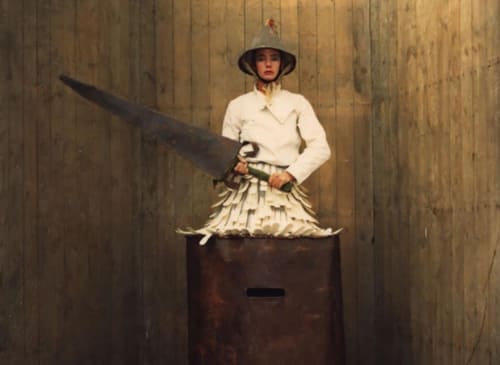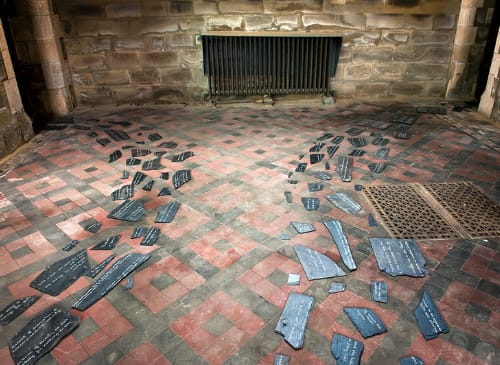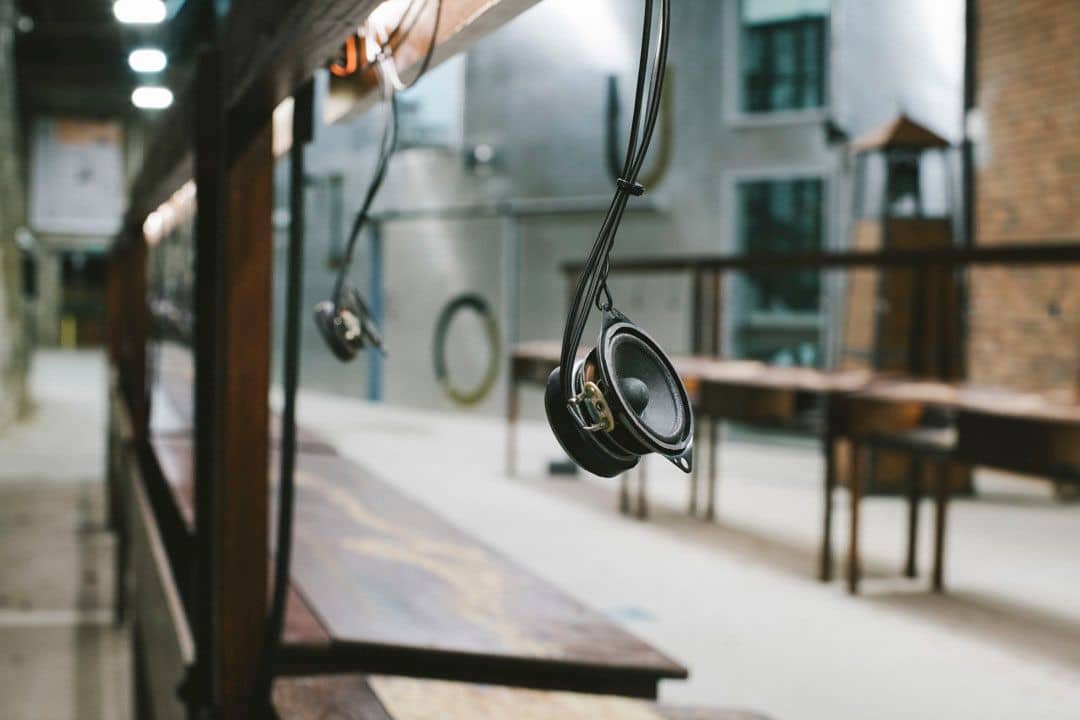The Start of a New Era
IOU on opening a hostel, championing artists, and carving its own path for half a century.
Words by Laura Robertson
After 45 years of performing live – on top of buses, in chapels and abandoned barns – IOU is ready for a new adventure. Laura Robertson speaks to Artistic Director, David Wheeler, and Executive Director, Joanne Wain, as they announce the IOU Hebden Bridge Hostel takeover, tripled artist’s development programme and new, post-pandemic shows.
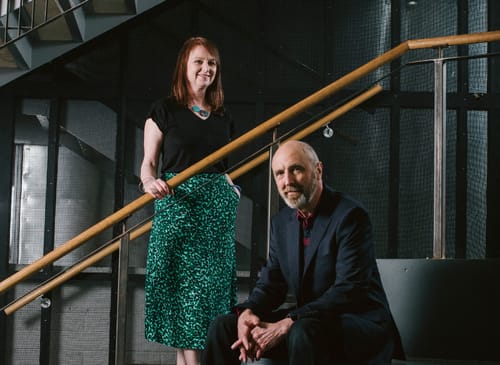
The Story so Far
The theatre makers had built their own seating rig that made the space in Oval House, London, into what felt like a “cock-fighting ring.”. The play Rub a Dub Dub, one of three shows performed in March 1979, featured, “a dance between a Ford Cortina and a ship”. Audience reactions veered from captivated to outraged. Yet one thrilled spectator would come back again and again: the eccentric Scottish poet Ivor Cutler, who became a fan of IOU theatre from that night on; attending touring shows and visiting the troupe at their base in the Upper Calder Valley of West Yorkshire.
IOU’s performances appealed to Cutler’s “droll, dark humour,” recalls Co-founder and Artistic Director David Wheeler. It’s clear from listening to his stories about its rich and lively history that IOU has always been somewhat nonconformist. As Wheeler puts it: “We weren’t trying to find a way into theatre – we were trying to find a way out.”
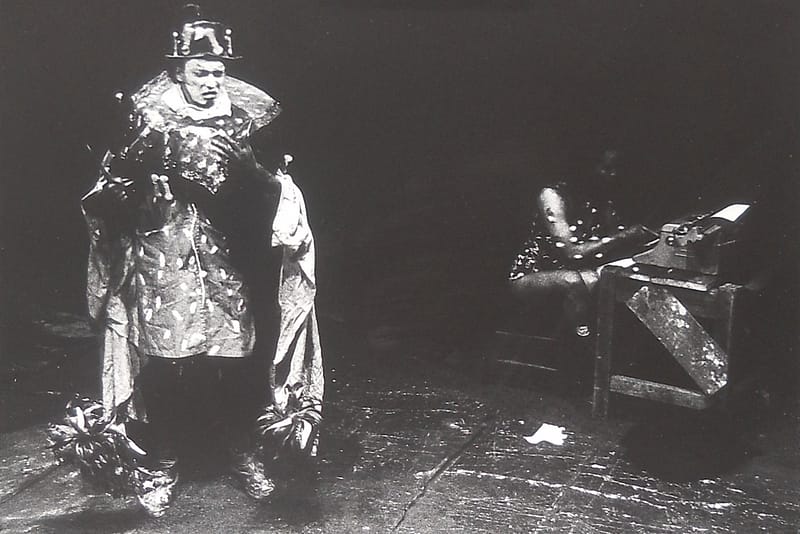
Producing fantastic, dreamlike performances as a collective of aspiring artists and musicians in 1976, IOU quickly established itself as a regularly funded, charitable arts-producing organisation with a distinctive style. Now with an architecturally dramatic, bespoke venue in Halifax, IOU’s oeuvre continues to be multidisciplinary – a heady blend of avant-garde theatre, live art, sound, installation, drawing, poetry, immersive digital technology… and a lot more besides.
Over the last 45 years, IOU has found, and continues to cultivate, highly unusual ways for audiences to experience storytelling outside of the traditional stage format: via GPS location tracking (My Three Words); a sunken, silted village (Between the Floods); to whispering ghosts (Long Division) and giant shoes (Full Tilt). Performances often include or are actually presented within surreal vehicles, from a rolling, giant pig and human powered bubble car, to the commandeering of real train commutes (Sea to Sea), to constructing a rear-facing sightseeing bus, giving the audience a backwards look at the world (Rear View – “probably the most complicated project we have ever done,” says Wheeler).
The original members – all art school or music graduates, including Wheeler, who trained at both Bourneville and Wolverhampton Schools of Art – pioneered ‘site-specific’ or location-based theatre as we know it today; now a common feature of cultural programming across the British Isles. In the 1970s, however, Wheeler recalls a very different scene. “The divisions between the different art forms were still very rigid, but beginning to break down.”
A New Era
The young IOU were keen to create something entirely new, in-between the gaps of established British theatre – which then was largely literary-based – and performance art. Early shows “developed and transitioned in a very visual dreamlike way,” he remembers, with music scores that the group composed and played live, which took the place of dialogue or linear narrative.
“We called ourselves ‘IOU’ to broaden the concept for work (time-based performance) that wasn’t based on existing texts, or presented in dedicated theatre spaces. What excited us most was making shows for unusual locations – these appealed to the art-minded, mostly young people of our generation, who were seeking new ways of thinking. But, we also made productions in public places where large numbers of people of all generations would gather who wouldn’t necessarily go to a theatre or modern art gallery.”
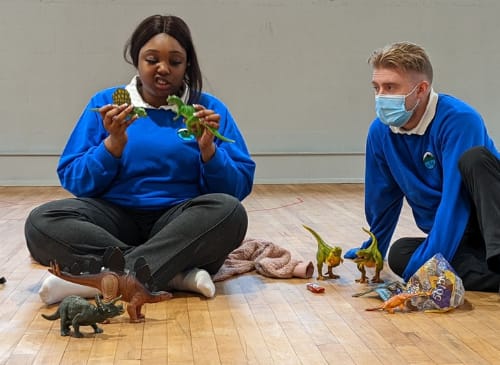
It’s rare for an arts organisation to survive such a long period, given the financial pressures and societal changes through the late 20th and into the 21st century, not to mention a global pandemic (and managing to keep going with no staff lay-offs). Of the many experimental theatre companies initiated in the ‘60s and ‘70s, only a few endure.
IOU has thrived, it seems, by sticking to the core purposes of making original new work that is accessible through non-traditional presentation; and by mentoring and assisting the production of new work by emerging artists, specifically through IOU’s artist development – Space Time Tools programme.
“Productions are at the heart of what we do,” says Executive Director Joanne Wain. “We’re currently working on installations suitable for outdoor settings (as the desire has risen substantially post-pandemic), and exploring sculptural and hybrid digital art trails (like Hard Evidence). Every project needs multi-skills, multi-technologies. Everything is original and made from scratch. We’d never move away from that. It’s always going to be about an art intervention, or experience, and realising it with whatever tools we can get our hands on. That’s what makes IOU!”
With a background in music journalism (writing for The Face, Mixmag, and sub-editor of Jockey Slut), and previously General Manager and producer for Future Everything and the Cultural Olympiad, Wain started at IOU in 2014.
IOU’s evolution with Wain in post has seen the company grow substantially, including a move in 2016 to their new, specially designed base within the beautiful Grade II listed Dean Clough Mills, where they’ve been since 1984. The move was completed, just in time to celebrate the company’s 40th anniversary, with IOU shows and installations in the new studio and along the Upper Calder Valley.
With the gallery, studio and workshop, Wain is keen to develop IOU as a destination venue with visitors in mind – as a creative centre for artists and community alike. In 2022, they will triple their artist development programme, entitled Space Time Tools Advice, but also, ambitiously, by way of a brand venture as – surprisingly – hostel managers.
“We have opened the new IOU Hebden Bridge Hostel as a not-for-profit extension of the charity,” announces Wain. “In partnership with Pennine Heritage, it is central to our vision for the future. Out of it will grow something really special for the area.
We want the hostel to become an asset for the region and visitors to the area”, she says. “While providing affordable accommodation for visitors and Pennine Way walkers, it’s another space for us to run our activities and a resource for other cultural organisations to support their programmes. It provides a place to stay for artists developing their practice with us, as well as artists and performers working on IOU productions. It’s also the ideal setting for longer, creative retreats.”
The Hostel
For artists who want to work with IOU through Space Time Tools Advice, it’s good news. As Wheeler and Wain point out, artists often find it difficult to find overnight accommodation they can afford (consider the notoriously low incomes that artists face, plus funding cuts, childcare issues, travel restrictions, and more). The addition of reliable lodging means more opportunities to use the studio by artists who don’t live in the area, to take advantage of IOU’s staff skills, to learn about IOU’s distinctive work processes, and to receive much-needed time and dedicated space to develop their projects. The next twelve months is already booked up with twelve diverse, visiting artist groups, with expectations of more into 2023.
The hostel is just five minutes from the town centre, and with 14 bedrooms, self-catering facilities, gardens and a woodland setting, it’s a complement to their current offer that the team hope will bring brand new visitors and collaborators to the door of their more industrial studio, gallery and workshop space in Halifax.
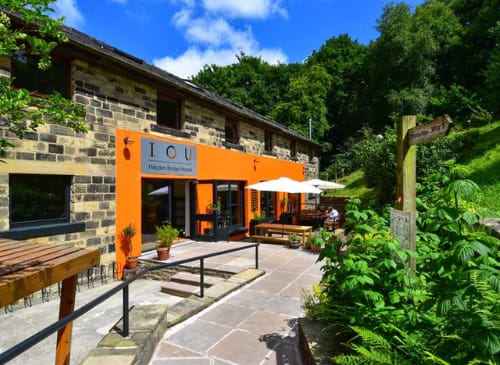
The setting itself is glorious. Hebden Bridge is a post-industrial market town fed by the Pennine Ridge, and part of designated beauty spot The South Pennines Park, which stretches from Blackburn in Lancashire to Huddersfield in West Yorkshire. With its lovely architecture (the schoolhouse to next door’s former Baptist chapel) and stunning hillside views, the Hostel is ripe for rest and creative input. “The idea of it being a constant shop window will bring new people to IOU who wouldn’t find us by the usual route,” says Wheeler. “It’s very exciting.”
“Calderdale is so unique in its landscape and industrial heritage” adds Wain, “I’m quite passionate about celebrating where we are, and where we’ve emerged from.”
There are other new ventures, too. IOU’s website aims to demystify the making process and ‘backstage’ activity; as well as publishing stories about new work and partners, revealing R&D processes and everything that spins off it. “A lot of what we do that is visible to the public, is the tip of the iceberg,” says Wain. “We’re working on ways to open it all up and the website is another destination for people to visit.”
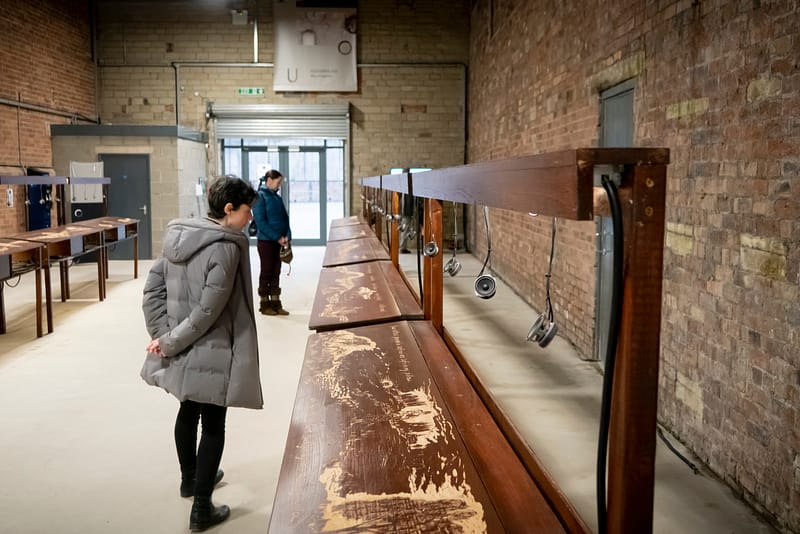
There are, of course, marvellous new productions in development as we speak. Hard Evidence, the aforementioned hybrid trail, will celebrate lives and working practices that still mark fields, alleyways, paths and abandoned barns along The South Pennines, with cast-iron sculptures and audio guides, made in collaboration with local community groups. The March (working title) harks back to IOU’s early inventions: part-wheel, part-durational sculptural installation that fuses engineering with interactive digital technology, designed for outdoor events and festivals; within it, a lone figure walks the streets at the centre of a giant, gleaming steel wheel.
There’s sound installation Two Rivers, which focuses on the passing of time, growth and decay in the natural world, and Terra Nova (working title), an installation built as a series of miniature landscapes within terrariums; soundscapes, words and video will play out ancient and new creation myths.
It’s a thrilling time for IOU. Wheeler credits the tenacity and imagination of Wain and the rest of the IOU team with getting through the difficulties of the last couple of years and arriving not bowed, but in a strong position; ready to captivate audiences – and inspire future artists – once again.
“The future will be about building on our established identity and sharing our experience”, he says. “We will work with new artists in new directions for a challenging but exciting new era.”
Laura Robertson is a writer and art critic based in Liverpool, UK.

